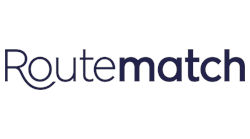A year-long technology project has been completed at the Bismarck-Mandan Transit Center and customers catching the Capital Area Transit (CAT) now have more information at their fingertips than ever before.
The CAT is now utilizing hardware and software that will help disseminate route and schedule information, as well as streamline its data and connectivity internally, and with other urban public transit systems in the state. The software and hardware, produced by the Atlanta-based company RouteMatch, entered a testing phase in late November 2013. Since then, CAT staff has been preparing for the formal launch of all aspects of the system.
“This has been a long journey – from adding RouteMatch’s hardware and software to our paratransit vehicles last year, and then the CAT vehicles this year,” said Transit Director Robin Werre. “It has taken a lot of people, a lot of hours, to get this project accomplished.”
Though RouteMatch’s hardware and software has been in place with Bis-Man Transit’s paratransit service since this time last year, many of its features used on a fixed-route system could not be tested due to the nature of door-to-door service. Verbal indicators for approaching or departing timing points, for example, are only needed on the fixed-route system where riders can exit the bus anywhere along the route. The same goes for an in-bus sign indicating upcoming timing points. When installation began on the fixed route buses, there were some logistics that needed addressing.
“It has been an interesting process,” said CAT Manager Nate Vatnsdal, who estimated 8-10 hours were required to outfit each bus. “We have had to be creative with how we’ve juggled getting some of the components installed, while still keeping busses on all the routes and not sacrificing service. But it has been a good experience overall, and we’re looking forward to the options that RouteMatch provides us.”
Along with the verbal and visual prompts that are now part of the rider’s experience on the bus, a free phone app called RouteShout is available that will put more route and schedule information than ever at a customer’s fingertips. The app allows the user to pick various timing points along the CAT routes and see when upcoming buses will be traveling by those respective routes.
Scheduled times of arrival, as well as estimated times of arrival, based off a bus’ real-time location will eventually be provided through the app, and users will have the ability to save or favorite stops and routes they frequently use. If a rider is not familiar with the CAT routes, an option will also be available to simply enter their location into the app, and have it search for the nearest routes and timing points.
The app is expected to increase a rider’s understanding of, and independence with, Bismarck-Mandan’s public transit, as well as others in the state. RouteShout can also be utilized in Grand Forks and Fargo, as well as in many other cities throughout the country. The app is available for Droid and Apple devices, but is not available for Windows-based phones.
“At some point in the near future, we will also have a page on our website dedicated to a real time map of buses traveling along on the routes,” said Marketing Director Kalen Ost. “That visual component is going to also be a big draw for our riders, especially for someone who may not have an Android or Apple device, but has access to a desktop computer or a windows-based device. They won’t need to stand outside in the cold, waiting for the bus. They will be able to see its location and see as it approaches. We are really excited about the options that will be available for our customers.”
Ost noted that if a user opens the map and does not see a bus icon traveling along the route, to check the route’s timing points, which appear as small circles along the route, for schedule information.
Another useful feature for transit customers will be the availability of route information through texting. If someone texts various timing point codes to 25252, they will be able to see the various routes that are scheduled to go by that timing point in the next hour. These texting codes will be available on signs at various timing points, as well as at the agency website.
Other components of the system may not be as apparent to customers, but will still heighten the service they receive, albeit from behind the scenes. For example, the new system will track the number of riders getting on, and exiting, each bus. The automation of some of these processes will eventually lighten the driver’s work load, and allow them to focus more attention on driving customers along the routes.
“We are always looking at ways we can add to safety measures for our riders,” said Werre. “In the long run, we see the system as something that will allow our drivers to focus more constantly on the road conditions and surroundings, and make sure our drivers’ attention is on the road.”


